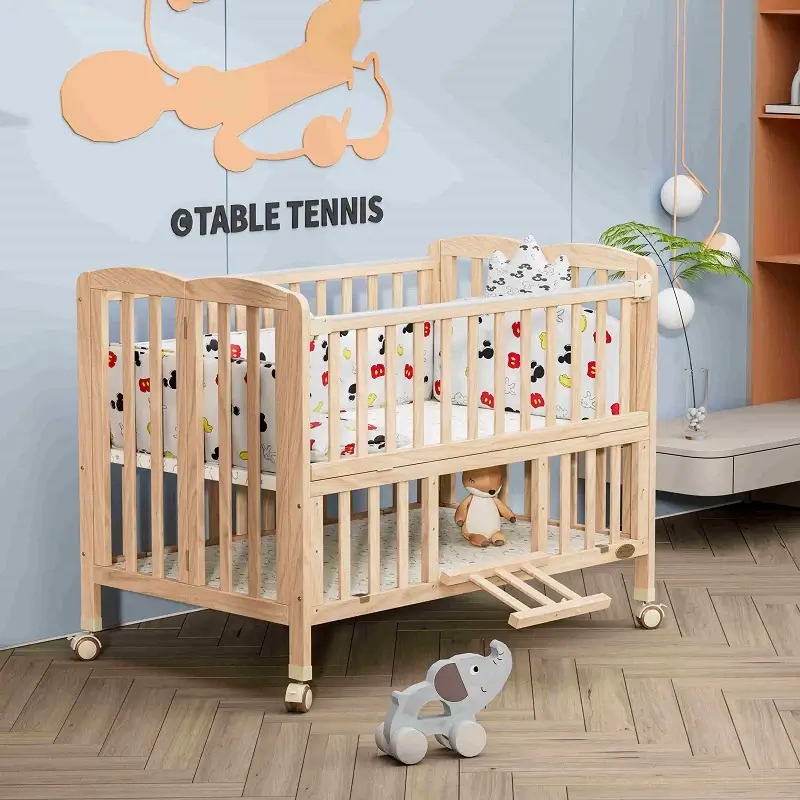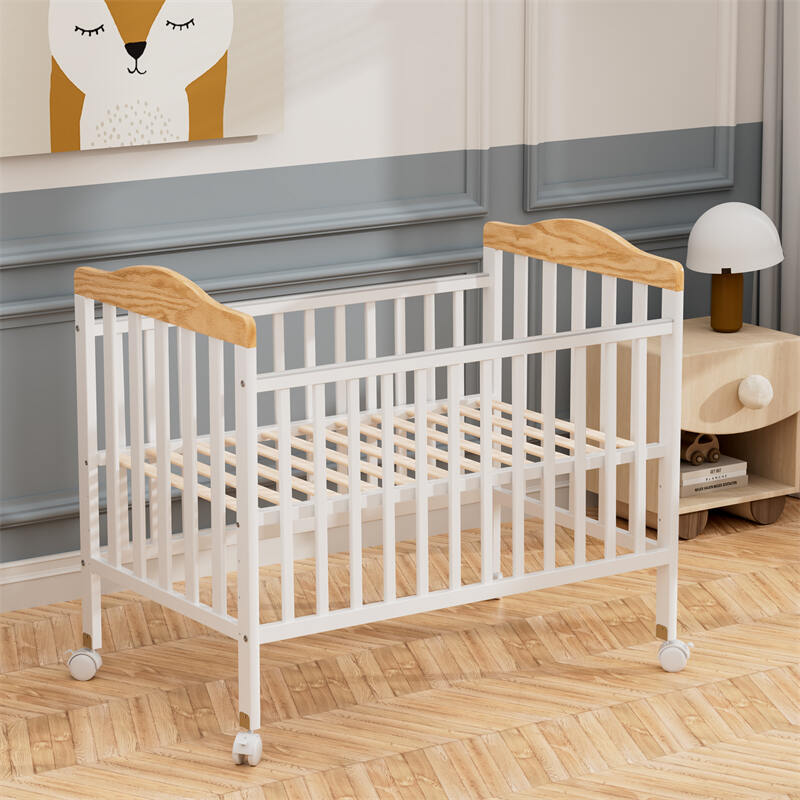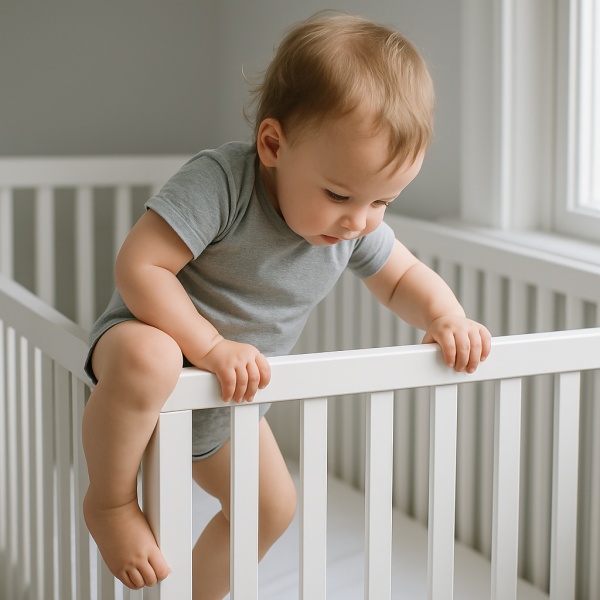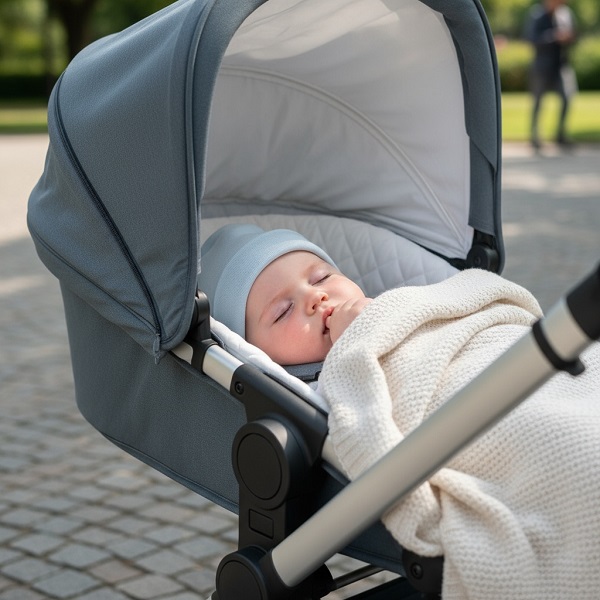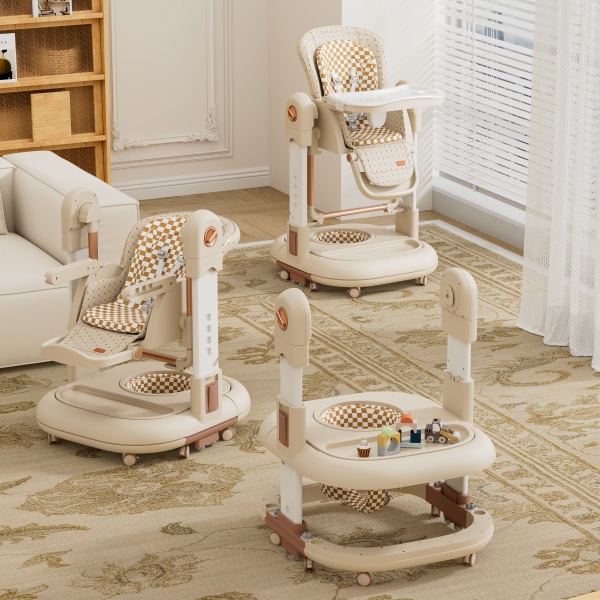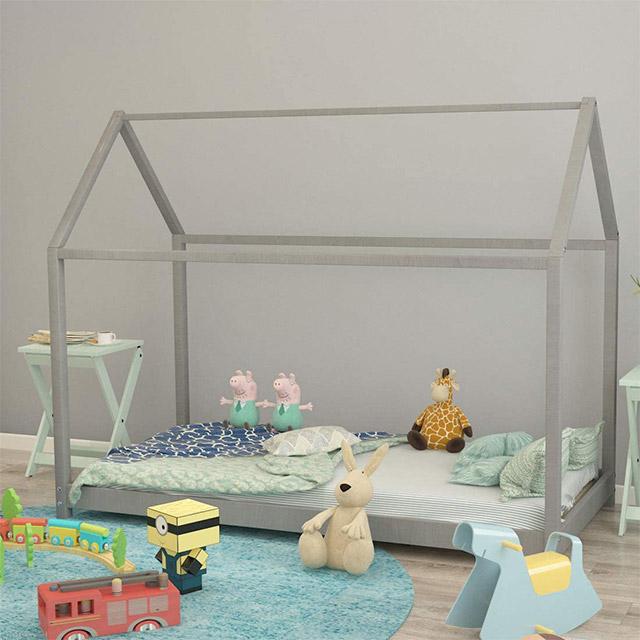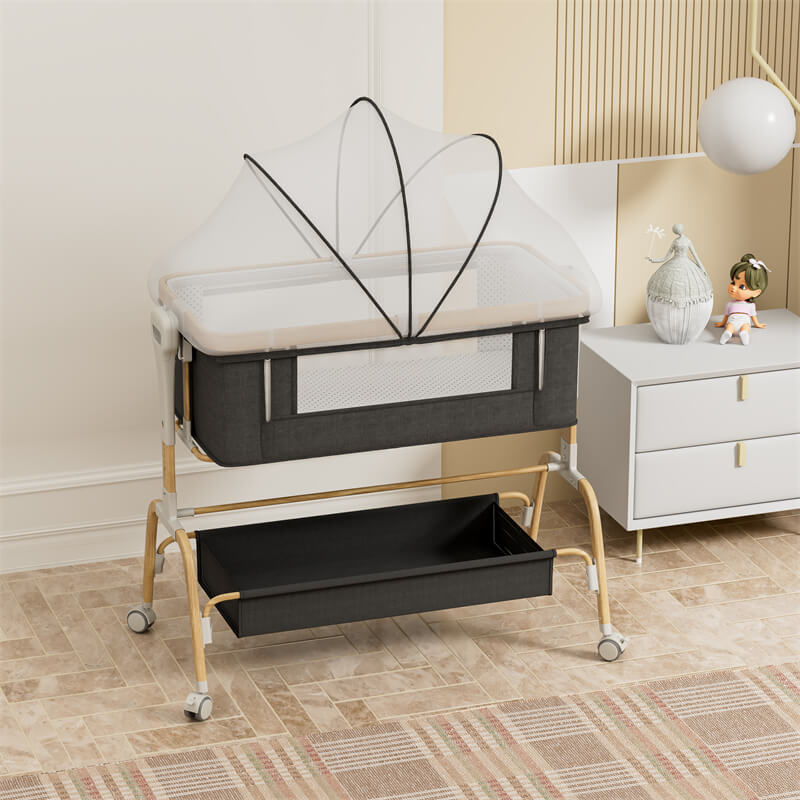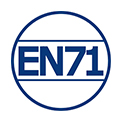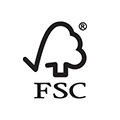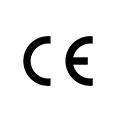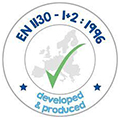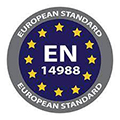Babies and toddlers require a high level of care, so choosing good baby products in advance is key. The crib will be in contact with your baby for a long time, so you should spend some time understanding the safe crib materials so that your baby can grow up healthily in a comfortable crib.
Additionally, crib retailers should monitor market trends and capitalize on them. Here is a guide for parents and retailers on common crib materials and current trends in baby crib materials.
Development and Trend of Baby Crib Materials
Cribs were widely used as early as the 17th and 18th centuries. Natural wood was the preferred material at that time because it was the most easily available raw material and could be processed manually in a period of underdeveloped industry.
Even today, wood still accounts for the largest share of the crib market and is the material most trusted by parents.
However, with continuous development, the materials used to make cribs are no longer single but have become more diverse, providing people with more choices.
1. Current Trends in Crib Materials
The focus on safety, sustainability, and consumer preference for more eco-friendly options are driving the current trends in cribs. The value of the crib market is expected to grow in the coming years. The growth can be attributed to the stakeholders in the industry ensuring the safety and health of their babies at all costs.
When analyzing the current crib materials, we also found that many parents are concerned about the characteristics of non-toxic and hypoallergenic finishes in the products.
People are further aware of the health risks and are afraid of and repulsed by paints, dyes, and finishes containing volatile organic compounds (VOCs) and other harmful substances.
Crib manufacturers also tend to offer products with water-based finishes and certifications from organizations such as GREENGUARD to the baby furniture market. This trend is in line with the broader trend of safer and more sustainable home products.
2. Emerging Materials and Innovations
The development of industry and technology has introduced new materials and innovations to the baby crib field, and exciting changes are taking place in the baby crib field. The application of these materials is gradually changing the traditional design and use methods.
- Smart Crib Materials: You may have seen smart cribs while browsing baby sleep products in stores. These products use special materials that can sense and respond to changes in the environment, such as temperature, humidity or pressure. Mattresses and pads made with smart fabrics can regulate the temperature of the crib’s sleeping surface and reduce the risk of overheating.
- Hybrid Materials: Bringing together the best features of multiple materials is a smart choice in today’s production world. Hybrid materials combine the advantages of different materials to create a crib that is both stylish and functional and durable. A good example is the combination of wood and metal materials, which makes the entire crib exude a modern feel, but at the same time very comfortable.
- Lightweight Material: In the crib market, lighter and more durable materials have been introduced, making cribs more portable. The push for the use of sustainable and non-toxic materials has introduced non-conventional materials like bamboo into the crib-making sector.
What are the Common Materials for Cribs?
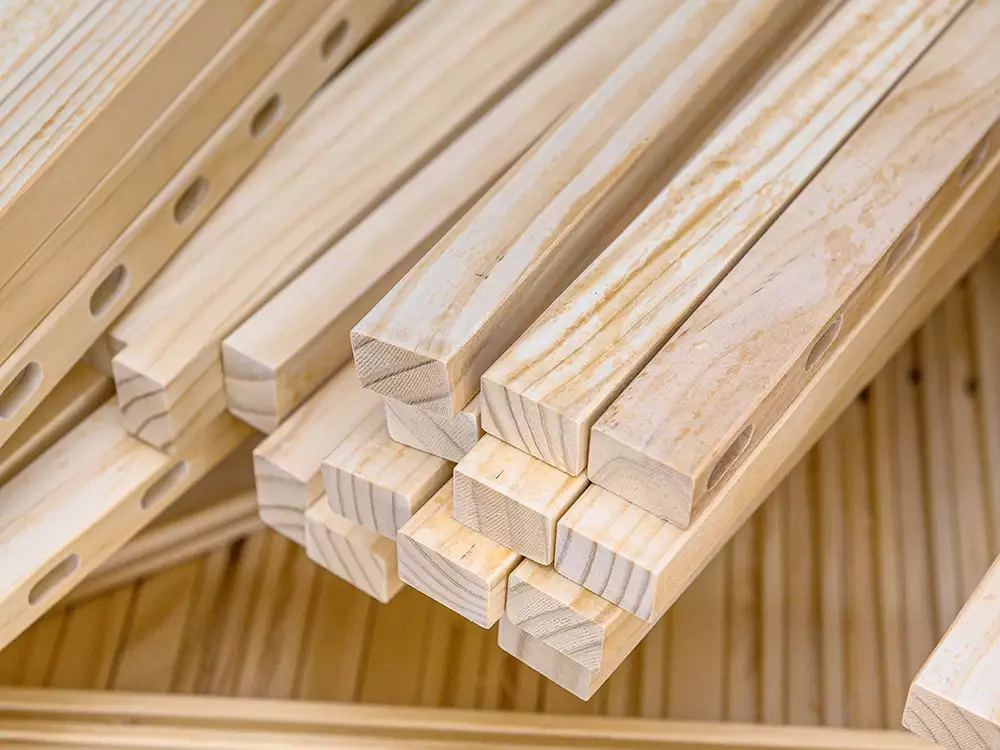
Cribs are sourced from a variety of materials. The common materials used in making cribs include pine, oak, beech, maple, engineered wood, iron, and aluminum.
Crib Materials Comparison Chart
| Materials | Weight | Safety | Durability | Eco-Friendliness | Comfort | Cost | |
| Wooden Cribs | Pine | Light | Safe, softer wood | Moderate, can be prone to scratches | Sustainable, renewable resource | Smooth texture, comfortable for babies | Affordable |
| Oak | Heavy | High, resistant to wear and tear | High, resistant to wear and tear | Less sustainable, slower growth | Very durable, can be hard | Expensive | |
| Beech | Medium | High, resistant to impact | High, resistant to impact | Moderately sustainable, hardwood | Smooth finish, good comfort | Moderate to high cost | |
| Maple | Medium | Safe, strong, and durable | High, resists scratches and dents | Sustainable, but depends on source | Smooth texture, comfortable | Moderate to high cost | |
| Engineered Wood | Medium to Heavy | Varies, depends on adhesives and finishes | Moderate, less durable than solid wood | Low, uses synthetic materials and chemicals | Can vary, not as comfortable as solid wood | Low to moderate cost | |
| Metal Cribs | Iron | Heavy | Very safe, strong material | Very high, long-lasting | Low, non-renewable resource | Can be cold or uncomfortable without padding | Moderate cost |
| Aluminum | Light | Safe, sturdy, and rust-resistant | High, doesn’t corrode | Low, non-renewable but recyclable | Cooler feel, may require padding | Moderate to high cost |
Key Points:
Weight: Heavier materials like oak, iron, and aluminum offer the best stability but are more difficult to move due to their bulk. Pine and aluminum are lighter and can be easily repositioned.
Safety: Solid woods such as oak and beech are hard and not prone to collapse or deformation. Engineered wood is relatively inferior in safety, but not completely unreliable, depending on the quality of the adhesives and finishes used.
Durability: Engineered wood is less durable and will not last for years or become an heirloom like hardwood materials such as oak, beech, and maple.
Eco-Friendliness: Natural woods like pine, maple, and beech are more eco-friendly if sourced responsibly. Engineered wood and metals have a lower eco-friendly rating.
Comfort: Natural wood is the most comfortable material with a warm, smooth, and comfortable texture and finish. Iron and aluminum cribs may need more soft padding to ensure sleep.
Cost: Pine is the most cost-effective among all types of solid wood products. Oak and maple cribs can be expensive, and engineered wood is affordable but not as good as other types of materials. Metal materials are moderately priced.
Wooden Baby Cribs
Pros:
- Durability: Wooden cribs are sturdy and can be used by babies for a long time if they are well maintained. Both hardwood cribs (oak) and softwood cribs (pine) are durable although the latter is more durable.
- Safety: Wooden cribs are generally safe for use by babies. If you get your crib from a trusted manufacturer, your baby can use the crib for a long without any adverse effects. They are also stable as they have sturdy frames that can support sleeping and playing babies.
- Variety of Designs: Wood cribs offer parents and retailers an extensive range of design options. They cater to a wide market as parents can find designs that meet their preferences. The customizable options for wooden cribs are also many to cater to people with personalized choices.
- Eco-Friendly: Wood is a renewable raw material. Trees can be planted to replace the wood used in manufacturing cribs. Additionally, manufacturers have embarked on sustainability efforts as they play their part in environment conservation. Wooden cribs also help improve indoor air quality.
Cons:
- Prone to Damage: Wooden cribs are more susceptible to damage than metal cribs. Cribs made from softwoods can splinter, crack, or warp after some time of use. Wooden cribs are also prone to damage by pests. Termites may eat the wood’s interior leaving the crib’s frame less sturdy.
Metal Baby Cribs
Pros:
- Durability: They are designed to be used for many years and multiple children can use them. The same crib used by the firstborn child can be used by the second and even the thirdborn. This helps parents save costs.
- Sleek design: Most modern furniture designs are characterized by clean lines and a shiny appearance. Metal cribs have the same design as modern furniture and can add a touch of modernity to your home.
Cons:
- Higher Weight: Metal cribs are relatively heavier than wooden cribs. Their sturdiness and durability are an advantage but add to their weight. Portable cribs are in trend but most of them are wooden as moving the crib around the house would be tiresome. The weight also becomes a disadvantage when someone needs to redecorate the nursery.
What are the Safety Standards for Crib Materials?
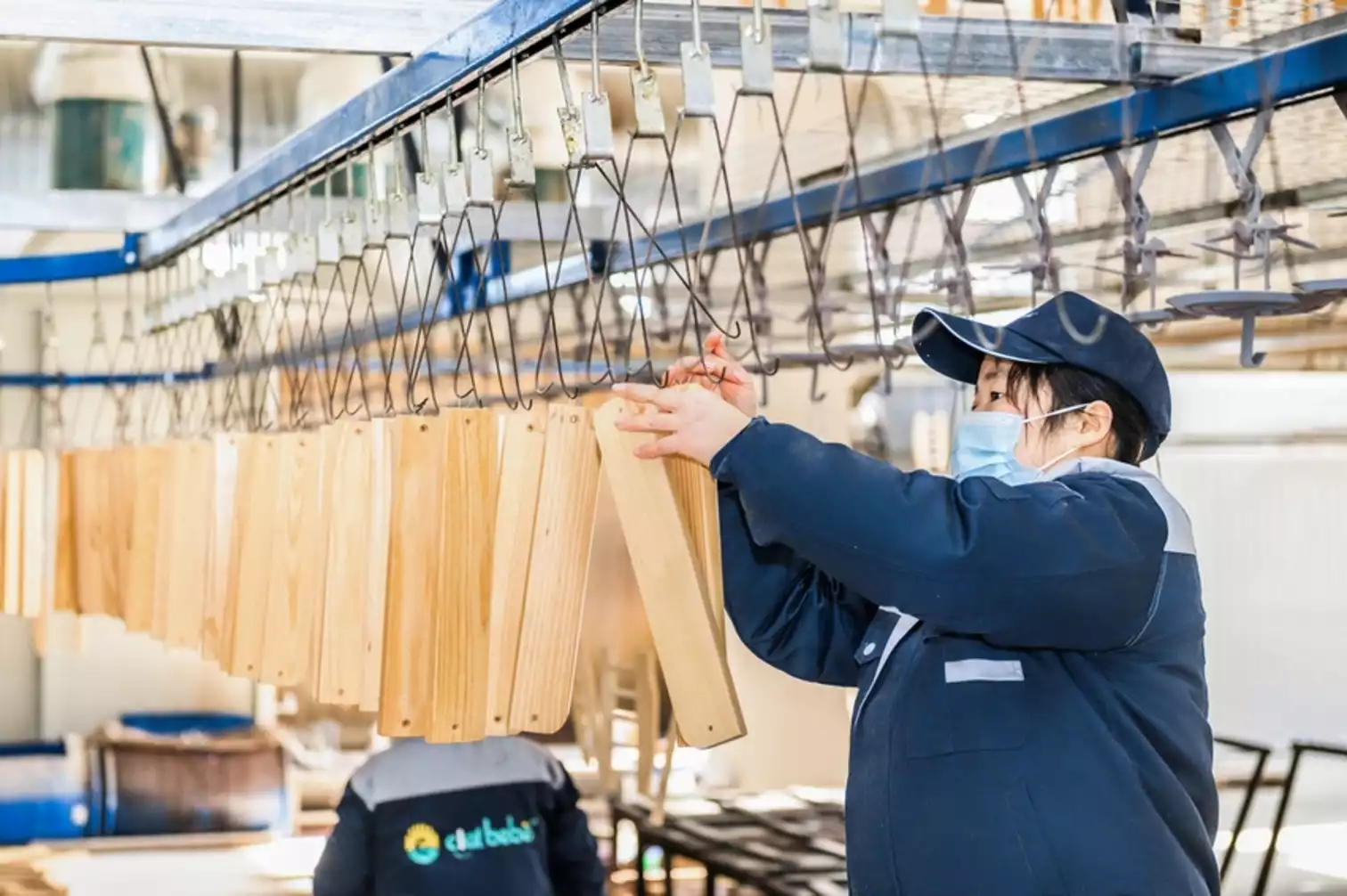
1. Safety Standards
Material Composition
- Non-Toxic Materials: Paints, finishes, and any coatings used on crib materials should be lead-free and phthalate-free.
- Safe Wood Types: Hardwood species like oak, maple, and beech are commonly used for crib construction. Softwoods should be avoided.
Chemical Emission Standards
- Low VOC (Volatile Organic Compounds): Crib materials, especially wood, should have low levels of VOC emissions.
- Formaldehyde-Free Adhesives: If adhesives are used in the construction of the crib (e.g., in plywood or pressed wood), they should be formaldehyde-free.
Environmental and Sustainability Standards
- Sustainable Sourcing: Many standards encourage the use of wood sourced from sustainably managed forests (e.g., FSC-certified wood).
- Recyclability: Crib materials should be recyclable or biodegradable.
2. Safety Certifications
JPMA: The Juvenile Products Manufacturers Association certifies baby products and ensures that they are safe for use. Regulatory bodies have set safety requirements for baby products and the JPMA has set additional requirements to ensure baby products are of utmost quality. The JPMA certifies cribs manufactured from safe and quality materials.
ASTM: The American Society for Testing and Materials is a regulatory organization that sets international standards for materials, systems, and products. The goal of ASTM is to ensure safety and uniformity for manufacturers across various industries. ASTM ensures that the materials used in making cribs are safe.
CPSC: The Consumer Product Safety ensures that manufacturers and importers of products including baby products have met consumer product safety requirements.
What is an Eco-Friendly Crib?
Eco-friendly products are products that have a lower negative impact on the environment.
One of the ways of combatting climate change is pushing for the use of eco-friendly products. Eco-friendly products have a low negative impact on the environment all through their life cycle. Their raw materials, manufacturing processes, shipping, use, and disposal/recycling have minimal negative impact on the environment.
Eco-friendly cribs are sourced from sustainable products such as pine and bamboo. The cribs are also designed to have less negative impact on the environment. They do not have non-toxic finishes and do not use toxic paints such as lead.
In making eco-friendly products, the manufacturer’s responsibility does not end when the crib is complete. They extend to aspects such as packaging and shipping.
Eco-friendly cribs have longevity, they can be used for long reducing the need to dispose of them. Additionally, the cribs can be recycled easily. For example, when the baby outgrows the crib it can be converted into a toddler bed and they can continue using it.
What Impact Do Crib Materials Have on Health and the Environment?
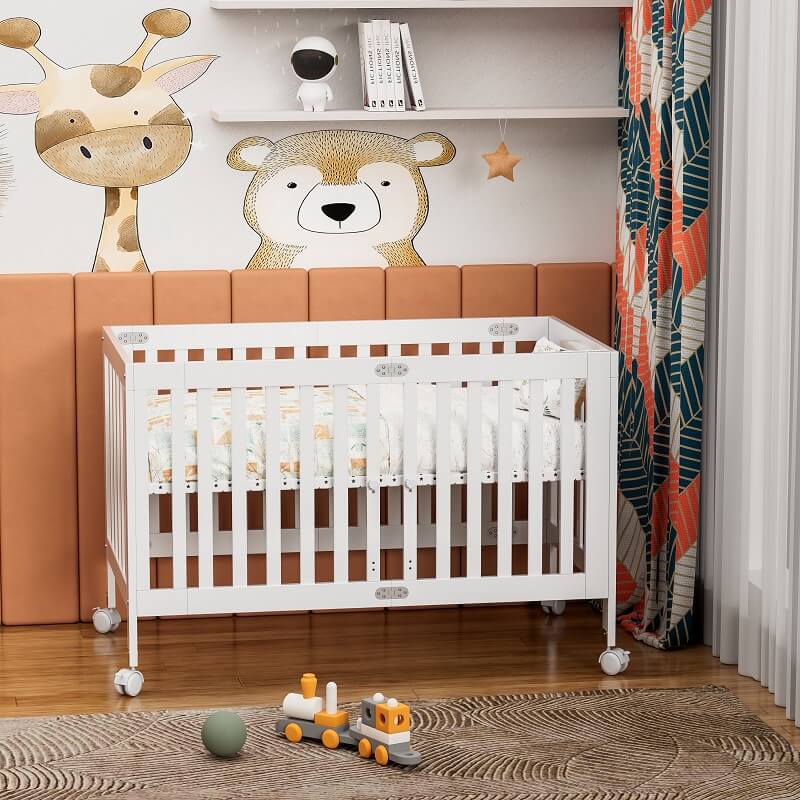
1. Impact on Indoor Air
Cribs with toxic finishes contribute to indoor air pollution. Some finishes and materials like composite wood produce emissions that affect the air quality.
On the other hand materials like wood are good for indoor air quality as they regulate humidity, and do not retain dust or dirt particles. Woden crib materials improve indoor air quality and should be the preferred materials for cribs as quality air is good for babies.
2. Impact on Babies with Allergies
Some materials emit emissions that may trigger babies with allergies. To avoid that, choose cribs that have non-toxic finishes. The toxic finishes not only impact your baby but also impact you.
It is preferable to pick cribs with natural finishing to avoid these incidents. However, some babies may be allergic to resins from certain woods. Therefore, take your child to a healthcare expert and determine the type of allergy they have. After that, you can avoid the materials that trigger the allergies.
3. Impact on the Environment
Crib materials can have a positive or negative impact on the environment. Composite wood and other materials may harm the environment as they may not only emit toxic emissions but their manufacture and disposal further harms the environment.
Eco-friendly crib materials are sustainably sourced. They are also designed to have minimal negative effects on the environment. Choose crib materials that can be recycled to reduce the risk of improper disposal
FAQ
Q: What is the Most Common Material for Cribs?
Pine is the most common material for cribs. It is durable, safe for baby use, and widely available. The cribs are also cost-effective.
Q: Are Metal Cribs Safe for Baby Use?
Yes, metal cribs are safe for baby use. They undergo the same quality tests as wooden cribs and have been certified.
Q: Are Quality Cribs Expensive?
Not necessarily, quality cribs can be affordable just ensure they are certified.
Q: Can I get a Customized Crib?
Yes, most manufacturers provide customizable crib options.
Conclusion
There are several common materials used to make cribs. When picking a crib, the crib material is one factor you should consider as it directly affects the durability, cost, and safety of the crib. If a baby is allergic to some materials, ensure the crib you pick does not have the material.
Clafbebe wholesales and exports natural wood cribs in a variety of materials. The raw materials used are all sourced from wood from sustainably managed forests. After multiple rigorous safety tests, the materials do not contain any ingredients that may harm the safety of babies. We only make environmentally friendly cribs!
Contact us to learn more about crib materials. And if you need to wholesale cribs, find us now to get a quote!
Recommended Related Articles:

